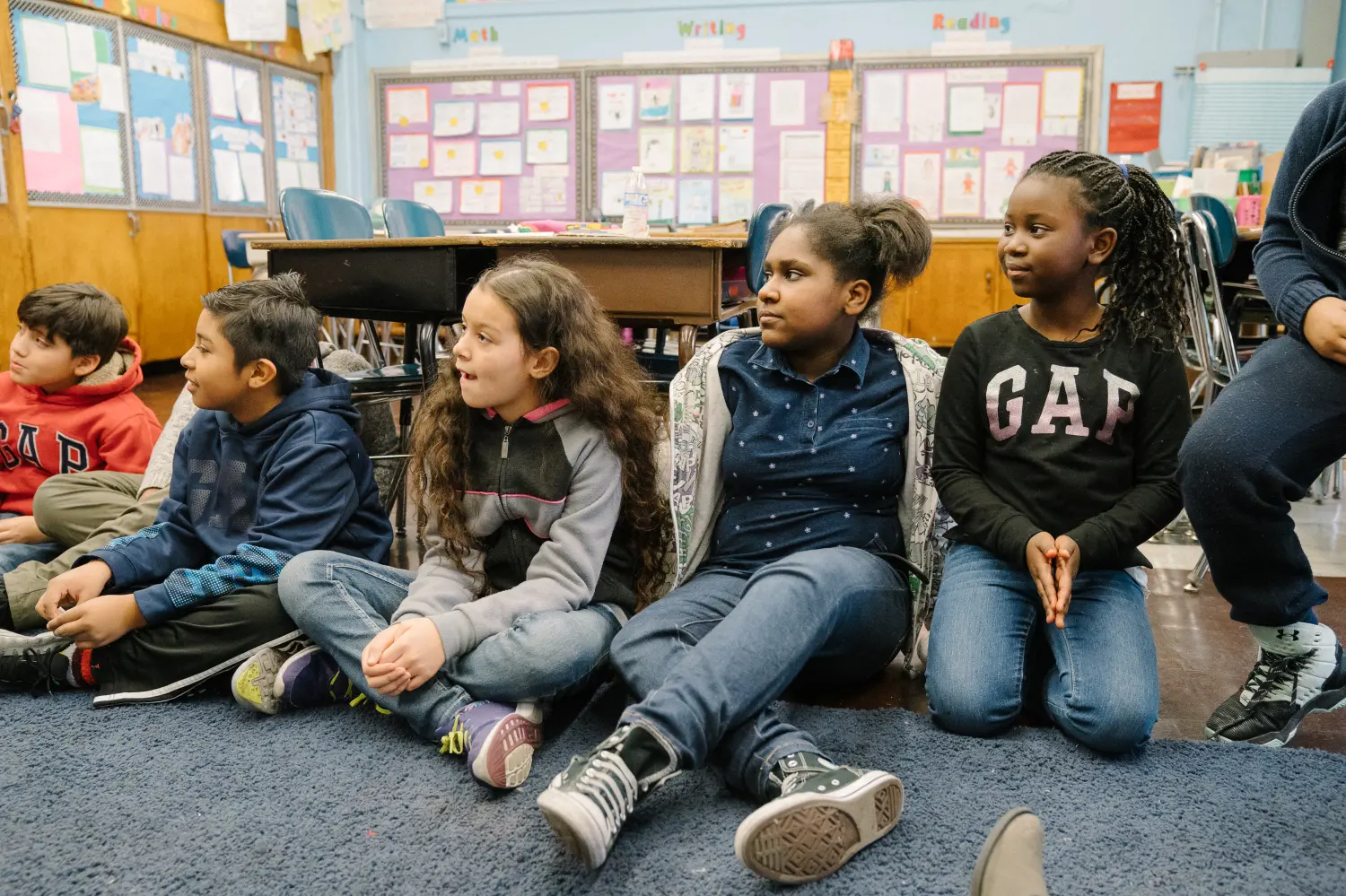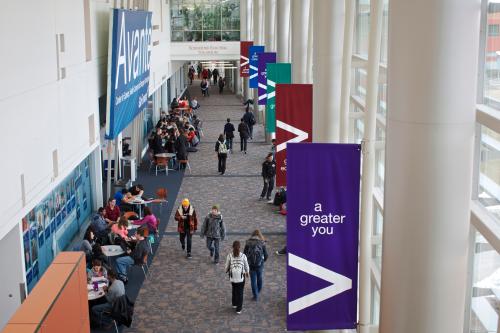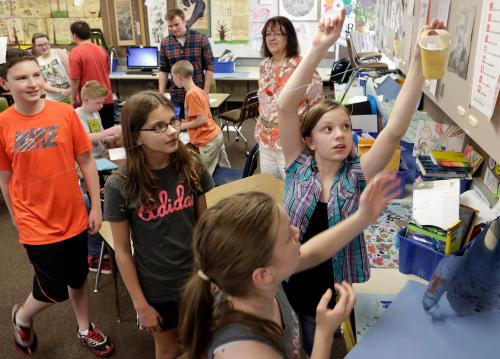The United States has long had, and continues to have, large and persistent economic and racial disparities in educational attainment—disparities that have implications for a variety of important life outcomes. Education disparities have been of interest not only to policymakers, but also to behavioral scientists interested in understanding and addressing them. Behavioral scientists have spent the past few decades developing and testing multiple strategies for reducing disparities. These strategies range from “light-touch” interventions that require minimal action and resources to “heavy-handed” interventions that require substantial investment. In this piece, I will discuss the conditions under which these strategies are most likely to be effective.
Multiple Barriers to Educational Attainment
Before I discuss intervention strategies, I want to explicitly acknowledge that education disparities are determined by multiple factors in society. That is important to remember because which intervention strategy you choose depends on which specific factor or constellation of factors you are trying to change. Take racial disparities, for example. If a policymaker wants to reduce racial disparities in educational attainment in their state, they must first identify what produces those racial disparities. As political scientists Maya Sen and Omar Wasow have noted, race is a “bundle of sticks” variable in the U.S. By that they mean: For historical and contemporary reasons, race can be a proxy for wealth, neighborhood, social status, norms, power relations, and a host of other dimensions that have their respective affordances (and drawbacks).
To develop an intervention to address race-based disparities, then, requires first identifying which dimension of race matters most for the specific disparity in question. Identifying the relevant dimension will allow one to develop and tailor a potent intervention that addresses the specific barrier(s), rather than developing a one-size-fits-all intervention that may not actually … fit all—or anyone for that matter. From there it will become easier to recognize whether a light-touch or heavy-handed strategy is more appropriate.
Light-Touch Interventions
Light-touch interventions tend to involve small tweaks that policymakers and practitioners can make to nudge students, teachers, or parents to change their behavior in ways that facilitate academic attainment. For instance, if low-income parents are underutilizing tuition-free early childhood education programs, researchers have shown that sending them text messages can increase the rate of completing required verification forms. For lower-achieving adolescents, a one-hour online growth mindset intervention that teaches students that intellectual abilities can be developed (they are not fixed) can improve grade points by 0.10 in core academic subjects. For low-income high school seniors preparing for college, getting application assistance information for completing the Free Application for Federal Student Aid (FAFSA) can increase the likelihood of college attendance, persistence, and financial aid receipt.
Light-touch interventions like the ones I just described have become very popular in recent years. Their successes paired with their ostensible low costs make them appealing to policymakers. They generally do not require programmatic or structural changes, they just require little nudges to get people to change their behavior.
When A Light Touch Is, and Is Not, Enough
While the light-touch approach can surely do some good—the small changes this approach tends to produce can, at times, be meaningful—we must not make the mistake of thinking these light touches will solve educational inequities on their own. As behavioral scientists have noted, light-touch interventions are not magical fixes to complicated social problems. They can be effective if the social structure and immediate context supports the messages being communicated in the intervention. If a student and their family live in a resource-rich environment with well-funded schools, with teachers who are not overworked and underpaid, with enough guidance counselors to provide adequate guidance, and is simply not taking advantage of what is available, then by all means nudge them along so they do not squander the opportunities afforded to them. Find subtle ways to change their behaviors so that they can make the most of their education. If they are not in such a context, then we may need to take a different approach. If students are in schools with 25-year-old textbooks and holes in the ceiling, then a light touch almost certainly will not be enough. Under those conditions, we should heed the advice of Professor Lindsay Page and “be cautious of the long-run benefits from $6 solutions.”
Another way of thinking about the interaction between light-touch interventions and the context of those interventions is to consider the age-old American advice for achieving success: “Pull yourself up by your bootstraps.” That advice only makes sense if the message recipient owns boots, and it is a ridiculous suggestion otherwise. That is to say, without fundamental educational structures and cultures in place, light touches will have minimal impact; under adverse structural conditions, it may be more fruitful to adopt more heavy-handed intervention strategies to reduce disparities in educational attainment.
Heavy-Handed Interventions
Heavy-handed interventions tend to involve large structural or programmatic changes to facilitate academic attainment by addressing differences in opportunities previously afforded to students from different backgrounds. For instance, to address differences in early childhood experiences, early childhood education programs like the Perry Preschool provided daily classroom sessions to support students and weekly home visits to help parents support their students; that program improved a variety of life outcomes for not only children who participated in it, but also their children in the next generation. For adolescents considering college, offering free tuition or other financial aid substantially increases the enrollment and ultimate success of low-income students in college. Finally, when students from disadvantaged backgrounds arrive on college campuses, particularly campuses that were designed with wealthier students in mind, building learning communities that provide the resources to foster academic achievement and social belonging can go a long way to improve student performance and persistence.
These heavy-handed interventions tend to be less popular (currently), in part because they are more expensive and disrupt the status quo. Rather than tweaking a message, they require spending time and money to redesign or develop new educational infrastructure to produce enduring changes in student outcomes. Although they are costly up front, it is important to consider the long-term gains of investments in quality educational programs—to consider what you get, given what you are paying for. In addition to the academic benefits, holistic interventions can produce long-term, multi-generational gains in employment, health, cognitive and socio-emotional skills, and even reduce crime.
We cannot nudge away class differences
Scientists and policymakers have become enamored with light-touch behavioral interventions and the possibility of using them to address pressing social issues. And, to be clear, there are times and places where these interventions produce truly outstanding results. The key is to figure out when you are operating in a space where a light touch can get the job done, and when something more holistic is needed—when you are working with people who are in the right situation and you simply need to change something in the people versus when you are working with the right people but need to change their situation.
In the U.S. education system, we seem to (sometimes) be able to make marginal gains by applying some light-touch interventions here and there. Yet despite those efforts, social class remains one of the biggest predictors of educational success. That is not a reality that can be nudged away. As long as structural problems continue to drive educational disparities, it seems most promising to address those barriers head on—to invest in more holistic educational interventions, even if they are more costly. Failing to do so (alongside the light-touch investments) may be penny wise and pound foolish.
The Brookings Institution is committed to quality, independence, and impact.
We are supported by a diverse array of funders. In line with our values and policies, each Brookings publication represents the sole views of its author(s).








